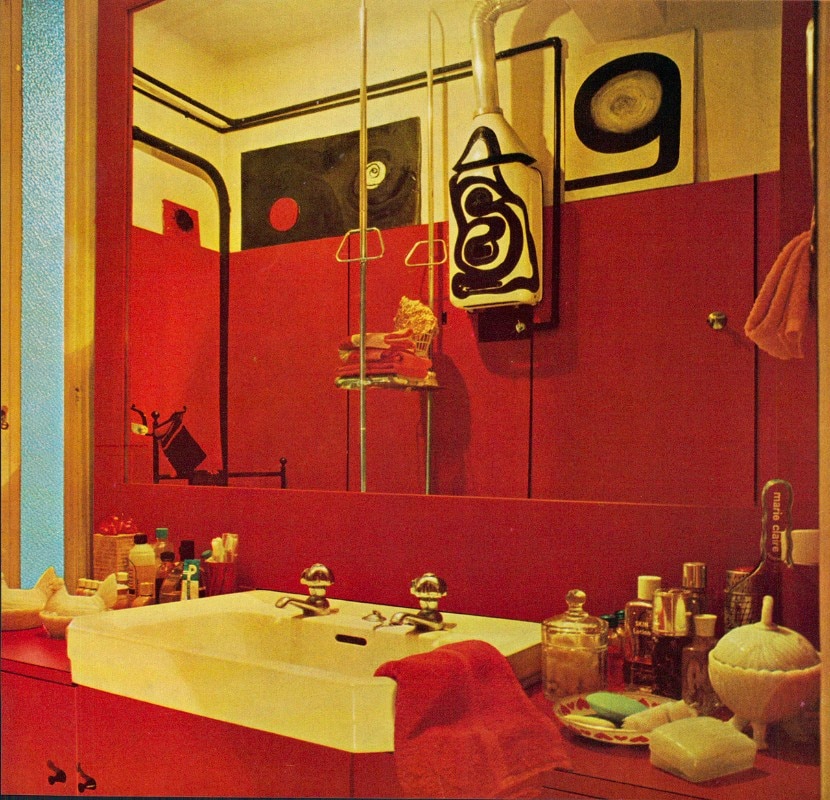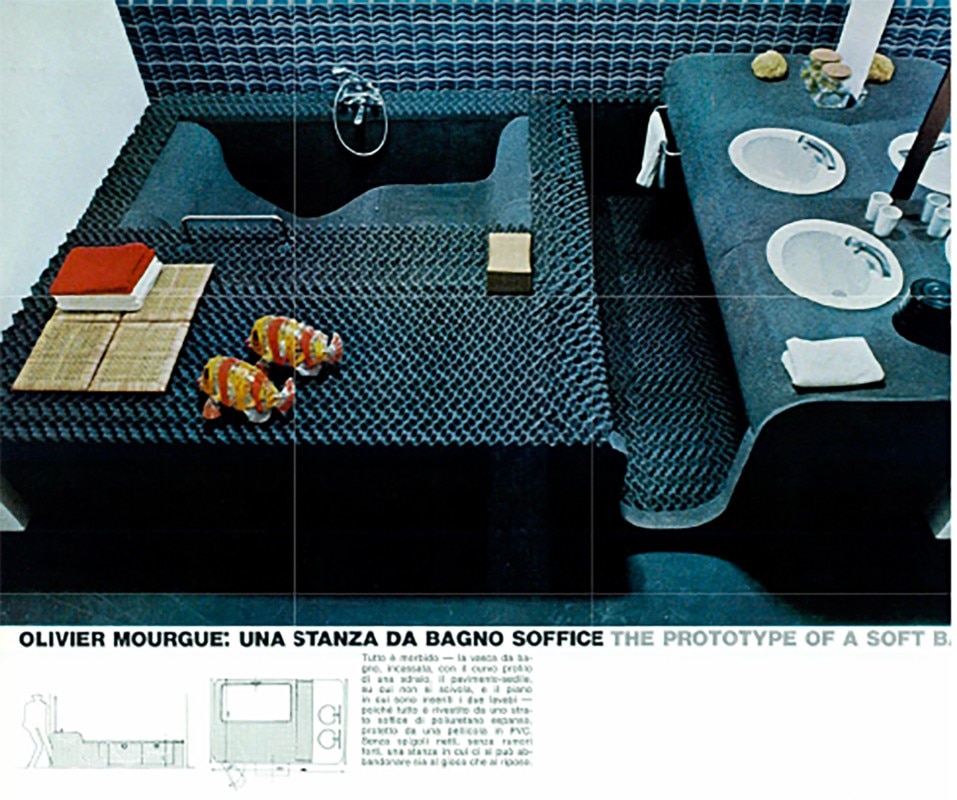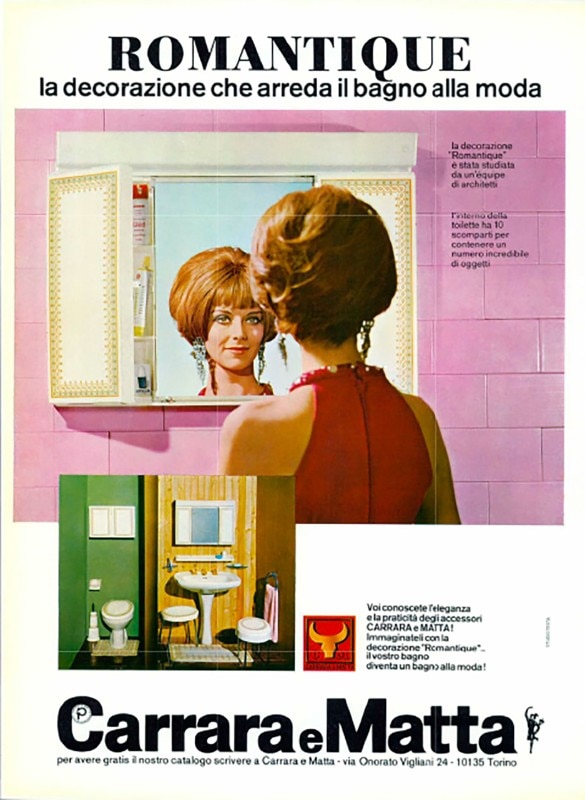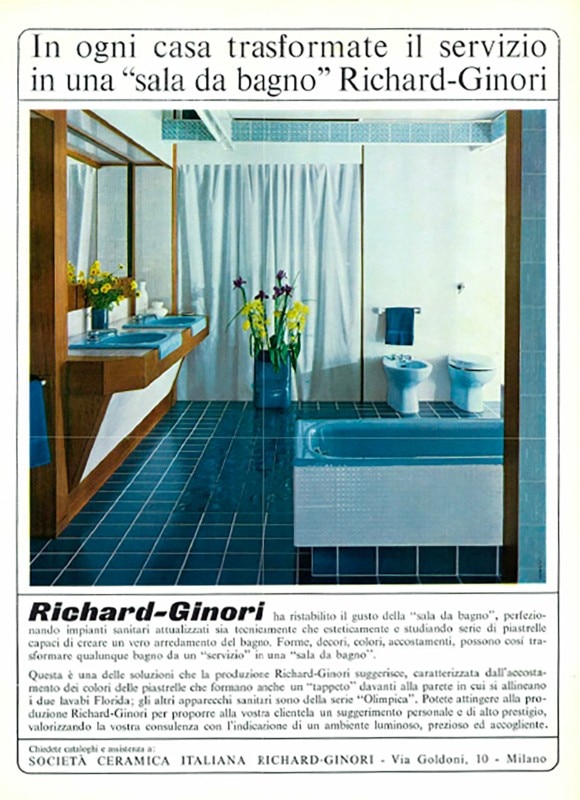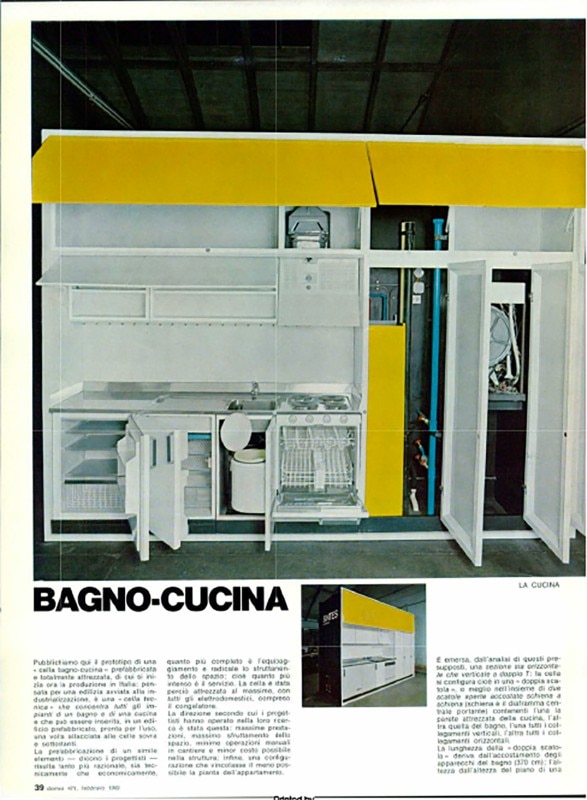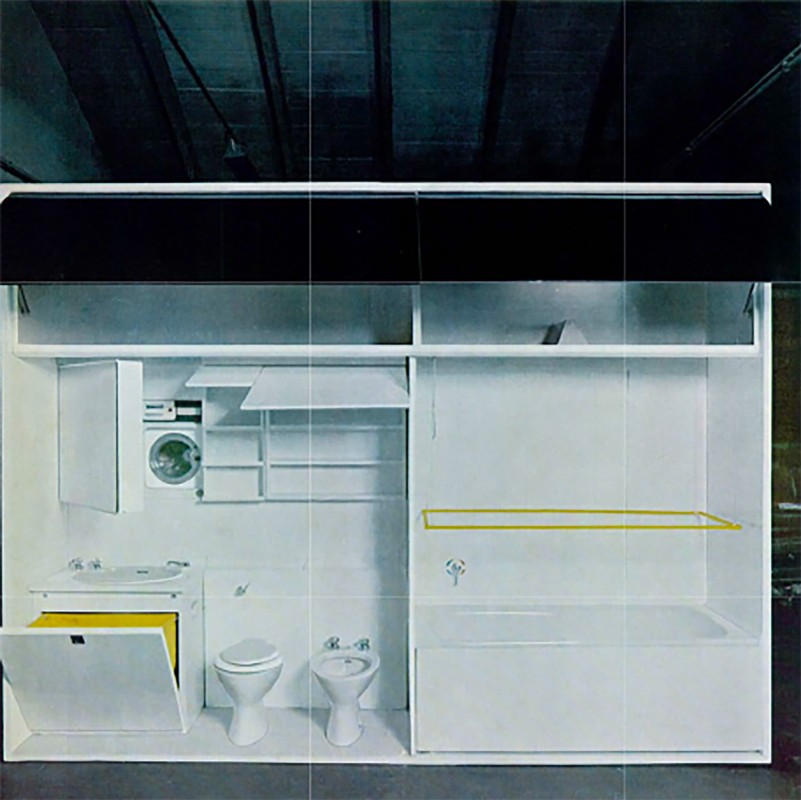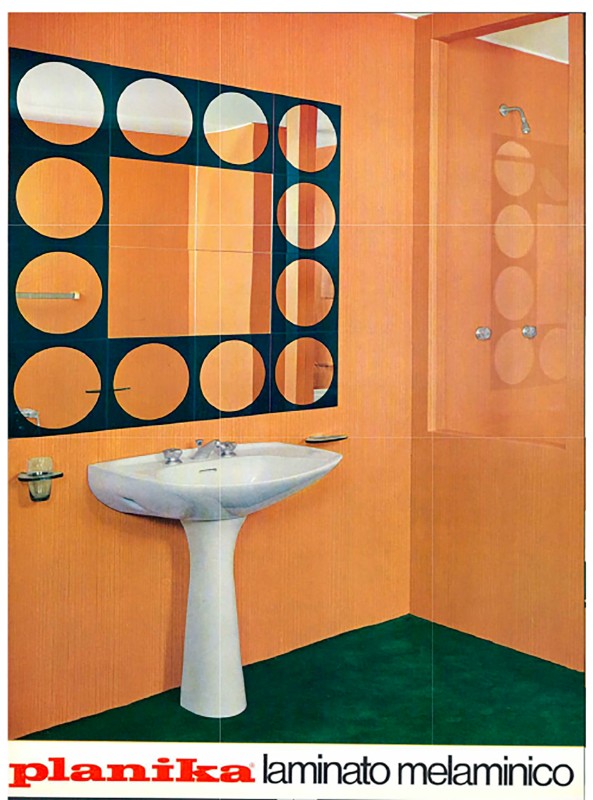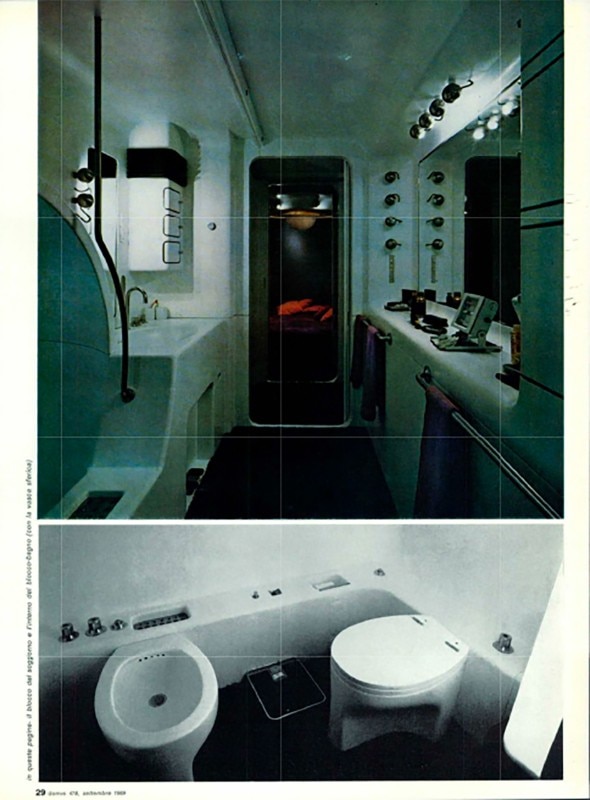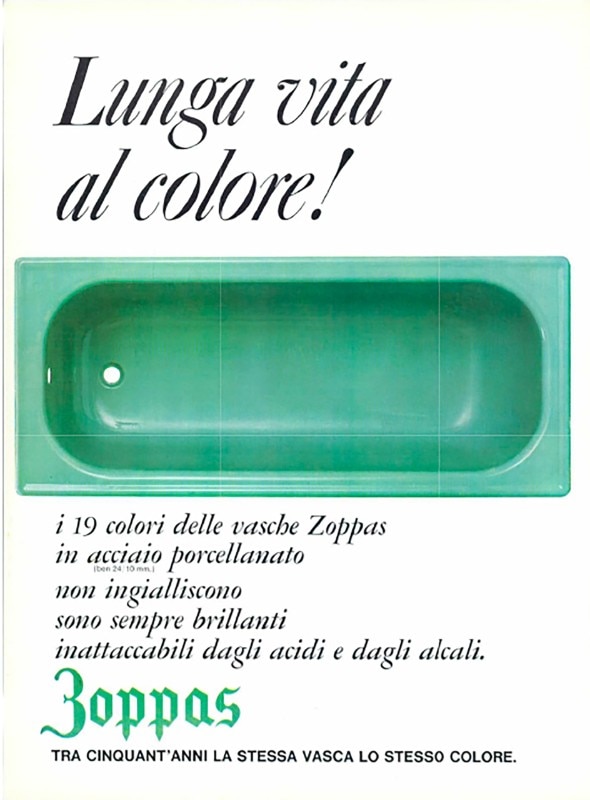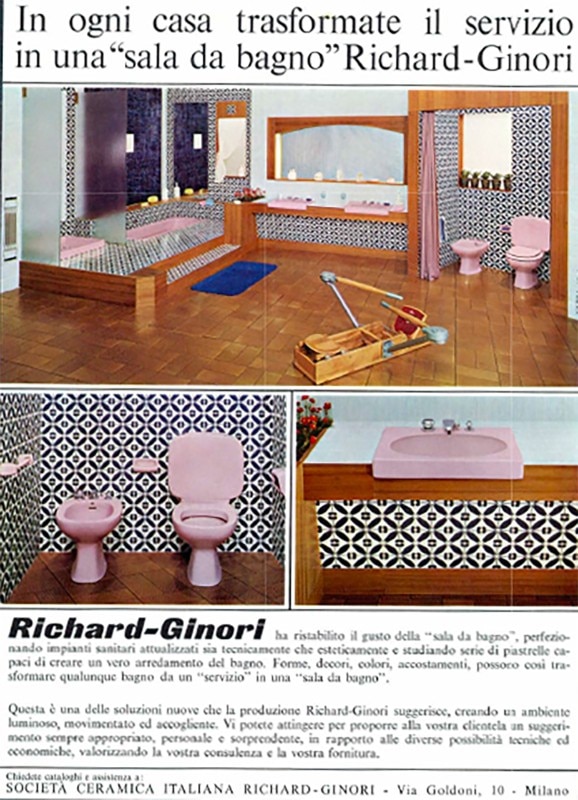Poppy red or periwinkle pink bathrooms, modular, portable, elegant, soft bathrooms. Bathrooms covered in ceramic tiles, or plexiglass bathrooms that are also kitchens. Domus, in documenting the history of the domestic space and how we inhabit it, has not neglected to tell the story of that most private room, the room that perhaps, more than any other, tells the story of the owner of the house.
Interest in the bathroom began to occupy the pages of Domus in the 1960s, when, at the height of the economic boom, the room dedicated to our most basic needs underwent a revaluation and became a space to be furnished with care.
It is Ettore Sottsass's enchanting prose that takes readers to Nanda Vigo's flat in Milan, published in the autumn of 1965, an atelier house made of light, where the paintings “are set into the walls so as to be without thickness, that is, without matter”: even in the bathroom, the paintings are hung on the red formica, made to hide the old, ramshackle walls. The painted boiler and the exposed black pipes are part of the private life, where Nanda makes space for herself between her own paintings and those of Piero Manzoni, Jean Piene and Otto Fabri, leaning against the walls, on the floor. (Domus 432, November 1965)
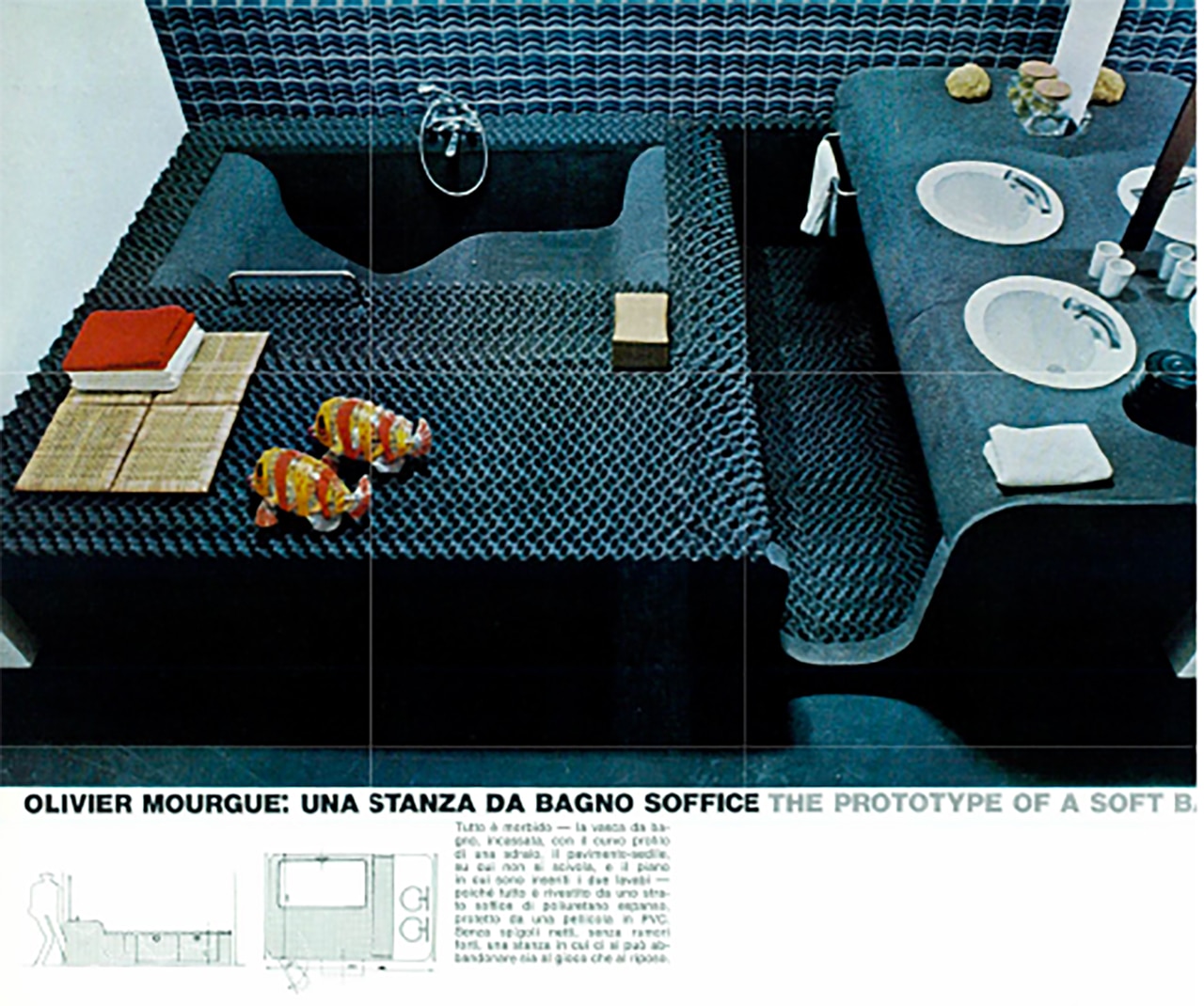
Ennobling and optimising the bathroom space became the main requirements at a time when houses in the city were changing their appearance. Modern proposals suggested transforming the bathroom into a real “room”, covering the walls entirely with coloured tiles, framed by wooden inserts, where periwinkle pink sanitaryware could be fitted, perhaps concealed by a curtain of the same colour. Containers and products were to be placed on blind window sills. “Long live colour!” declared the advertisements for bathtubs at the time; pink, pastel or even brighter, seemed to be the most popular colour, along with teal and sky blue.
To furnish the “fashionable bathroom”, fabrics or new furniture could be added, such as multi-compartment hanging cabinets, to “store an incredible amount of objects”.
Modern proposals suggested transforming the bathroom into a real “room”, where periwinkle pink sanitaryware could be fitted
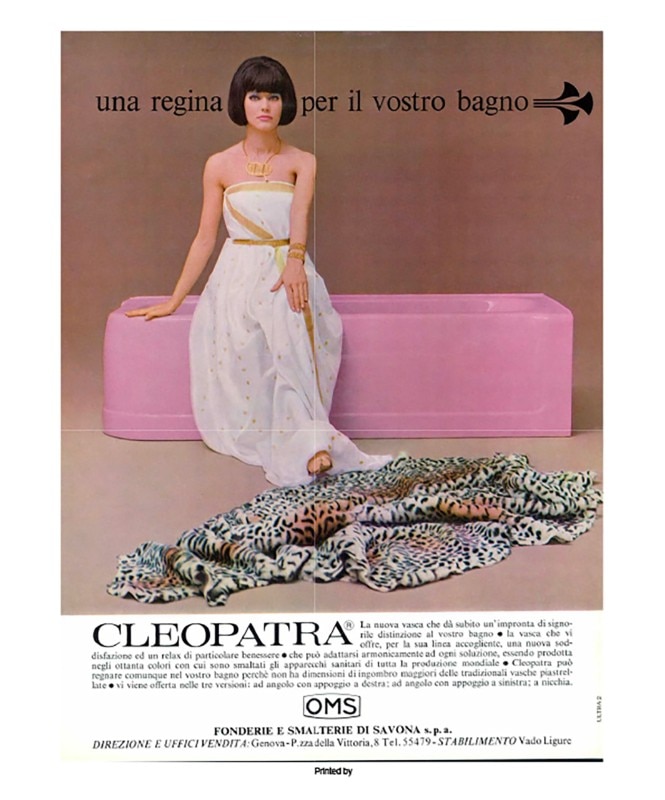
From 1969, not only “posh” bathrooms began to be published but also cheaper, lighter, practical and even bizarre solutions. At the Plastic as Plastic exhibition at the Museum of Contemporary crafts in New York, portable polyethylene toilets and transparent “sculpture” bathtubs appeared (Domus 470, January 1969), while in Germany, bathtubs and sanitary fixtures were produced in new materials, in orange Plexiglas with new shapes, designed by the Institute for Industrial Design of the University Of Hannover, conceived with spaces for seats, external taps and inspectable systems.
.jpg.foto.rmedium.jpg)
From 1969, not only “posh” bathrooms began to be published but also cheaper, lighter, practical and even bizarre solutions. At the Plastic as Plastic exhibition at the Museum of Contemporary crafts in New York, portable polyethylene toilets and transparent “sculpture” bathtubs appeared (Domus 470, January 1969), while in Germany, bathtubs and sanitary fixtures were produced in new materials, in orange Plexiglas with new shapes, designed by the Institute for Industrial Design of the University Of Hannover, conceived with spaces for seats, external taps and inspectable systems.
In the same years, Domus published the most experimental proposals such as Richard Sapper and Gianmaria Beretta's prototype of a “bathroom-kitchen cell” designed for prefabricated buildings, equipped with the most modern appliances: a project designed to optimize the costs of the structure and space, in a shape that constrains as little as possible the layout of the flat. (Domus 471, 1969)
Joe Colombo, on the other hand, at the Cologne Furniture Fair in 1969, proposed “Visiona 69”, designed for Bayer: a space made up of three “blocks” or living units, practical, fully equipped, prefabricated, where the “night cell” area consists of a closable night-bathroom block, fitted with the most modern electrical accessories and a spherical bathtub that could also be used as a shower cubicle. (Domus 478, 1969)
French designer Olivier Mourgue, famous for the futuristic red armchair in 2001: A Space Odyssey, decided to abolish edges and rigidity even in interior design: in 1970 Domus published her “soft bathroom”, completely covered in polyurethane foam, where the built-in bathtub, echoes the profile of a deckchair. The bathroom became a room without loud noises nor edges, “to wallow in at both rest and play”. (Domus 493, 1970)
In 1970, Sottsass again described, ironically and mercilessly, the atmosphere of “Zandra's” house, (ed. Zandra Rhodes, British stylist “queen of punk”), where “all the furnishings are made of vulgar plastic things [...]”, where there is a bathroom “with a pink soap egg and a yellow iodine bottle against hair loss and an archaeological collection of mangy old toothbrushes and crooked tubes”. (Domus 484, 1970)
there is a bathroom “with a pink soap egg and a yellow iodine bottle against hair loss and an archaeological collection of mangy old toothbrushes and crooked tubes (E. Sottsass)


